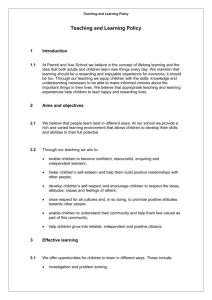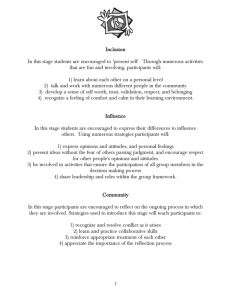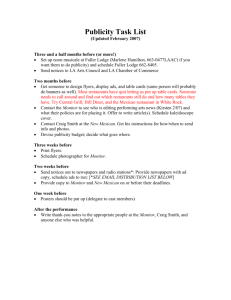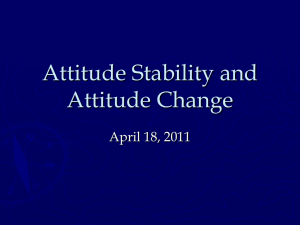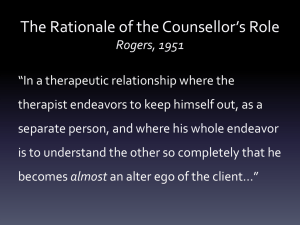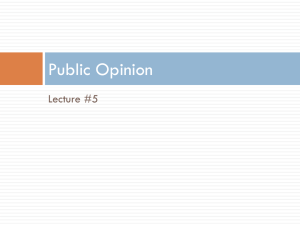Public Character of Schools
advertisement
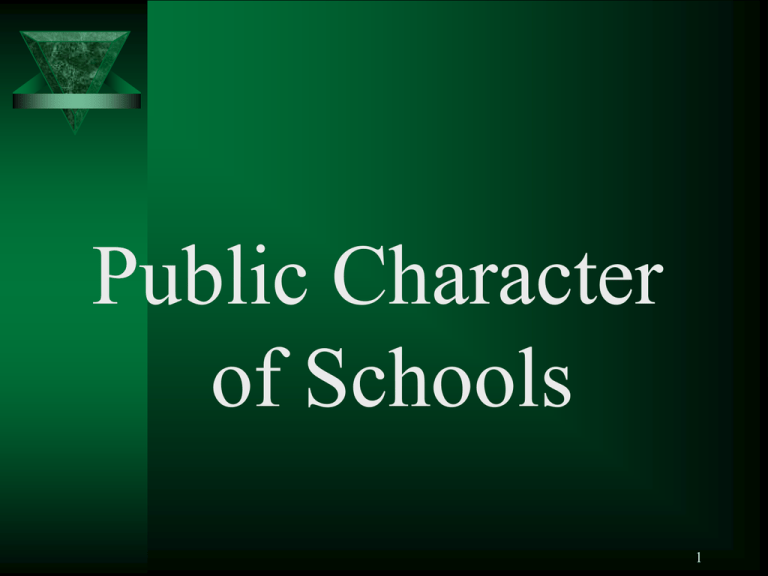
Public Character of Schools 1 Introduction In a democratic society, the relationship between the school and the community is a necessary and natural relationship. Schools are public institutions that are answerable to the public they serve. Schools cannot survive in a vacuum – the court of public opinion shapes policy and practices. The Public influences the nature and direction of change in schools. 2 Public Character of the School Only the farmers’ realization that they would be in charge of everything, from the building of the schoolhouse to the firing of teachers to the raising of money to pay for it all, made free public education acceptable to them. Wayne Fuller, The Old Country School House. (1982) 3 The legal structure of education resides at the state level which is usually delegated to local community control. The federal government has no rights (14th Amendment) yet intervenes in the affairs of schools at both the state and local level. The power to manage schools actually resides in the people. – – – – To elect legislators To support/oppose legislation affecting education To elect school boards. To lobby for the modification or repeal of laws. 4 The School Board Expected to carry out the popular will Time should be set-aside at board meetings for public comment. Meetings must be carried out in public No votes can be taken in private (Sunshine Laws) Minutes of the meetings must be made available to the public 5 The Rules and Laws of School Boards Emphasize the public character of schools Citizens share in the ownership of schools Citizens pay taxes that support their schools Citizens expect a good education in return for their investment. 6 Role of Superintendent Critical – most influential member of certified staff S/he must lead people to a place they would not otherwise go by themselves. Unless s/he is involved in strong community relations, nobody is going to get excited. Responsible for opening channels of communications Responsible for keeping board, staff, and the public informed. Assuring there is a viable plan and that it is assessed regularly. Provide info to community leaders that will cause them to act in behalf of the community’s children and their education. 7 Mistakes Supt. Make Listing to and responding to parental complaints without referring them to the proper channels. Fails to listen to principals , other administrators, or teachers. Making political appointments – avoid politics Making ill-informed decision just to try to show everyone that they are “in-charge.” Showing more concern for finances than employees Failing to have both internal and external publications that show the activity of their office – should regularly publish information 8 Role of Director of S-C Relations Interpret school board policies for the public Serve as a source of information and the communicater of matters regarding schools Assess public attitudes and opinions and keep appropriate personnel informed Compose and/or edit all written communications (internal and external) from the school system Interface regularly with members of the media Assist school officials with crisis management plans Provide professional development in the area of s-c relations for all school personnel. 9 Role of the Principal More than any other individual in the school, determines the degree to which people feel welcome, accepted, and comfortable within the school walls. Emphasizes relationships with all stakeholders Engages in two-way communications Is a good listener Helps the staff develop good communications skills Has an open-door policy – is accessible to all! Keeps the superintendent informed of success and failures Recognizes and celebrates accomplishments Maintains internal and external publications to keep all informed. 10 Role of the Assistant Principal Liaison between Principal and staff Maintains positive rapport with staff Communicates effectively with parents and students Motivates students and faculty Tries to build high morale among the staff Has a professional demeanor with all Establishes a disciplined student body. 11 Role of the teacher Has a profound effect on students’ feelings and what parents think about the school. If Johnny is miserable at school, then the parents will be miserable. Should be – – – – – Visible and accessible A communicator – regularly A person with a positive attitude Able to make business partnerships Able to teach students the importance of being 12 a member of the community. Role of the Office Staff and other non-certified staff First person that people often interact with in a school First impression is a lasting impression Must understand that they are part of a team that wants to promote the school positively. Must understand that EVERYONE counts in affecting the morale of the entire school. 13 Shared ownership Citizens must be given accurate and adequate information Citizens must have access to facts and ideas in order to be able to discuss and develop informed opinions. 14 The Influence of the Citizenry How they feel about schools determines the selection of the school board and if they support – – – – – tax rates passage of bonds curriculum salaries special services They establish limits and shape policy and guide operational practices. 15 School leaders need to understand… Public attitudes in a democracy and how that effects the education of children What public attitudes mean to the schools And why people think and feel as they do about the schools. 16 The Influence of Public Opinion Public opinion during the space race lead to the strengthening of math and science in the educational curriculums across the nation. Attitudes are always accompanied by some positive or negative feelings – some may be intense. Pubic Opinion is defined as any widespread belief of consensus arrived at by member of one or more groups, or as prevailing customs and traditions handed down by previous generation. Generally opinions concern controversial matters or are potentially controversial. The story of Appalachia and Ban the Books where customs of the people they served were disregarded. 17 School Community Relations – history 1920s Articles published about a formal approach to keeping the public informed – referred to it as “publicity” Publicity soon replaced with school public relations because • “publicity“ can be positive or negative • needed to tell a fuller story that reached a wider audience. 18 Moehlman definition: “ organized factual informational service for the purpose of keeping the public informed of its educational program.” In the 1920’s he stressed the importance of • • • • social contacts, parent teacher associations, appraisal of results. social interpretations – or, two-way communication and keeping the public continually informed. He spoke about active parental involvement as a partnership. 19 Schools are dynamic organizations and cannot adapt to change or make improvements without involving the stakeholders in its affairs. WITH the stakeholders the school leader should have a better handle on the community expectations. WITH the stakeholders, governmental agencies and organizations, there should evolve a climate of cooperation. Which should lead to an increased use of community resources. 20 The best definition (Bagin and Gallaher, 2001): Sound and constructive relationship between the school and community are achieved through a process of exchanging information, ideas, and viewpoints out of which common understanding are developed and decisions are made concerning essential improvement in the educational program and adjustment to the climate of social change. 21 Planned Relationship Most plans fail because the plan is for a single pressing issue – there really is no C-R plan. A comprehensive and continuous program must be PLANNED and it must address • involving those who are the responsible parties for the education of the children. • adjusting to social change • communicating the character, needs and services of a school • Developing and communicating a shared vision. 22
